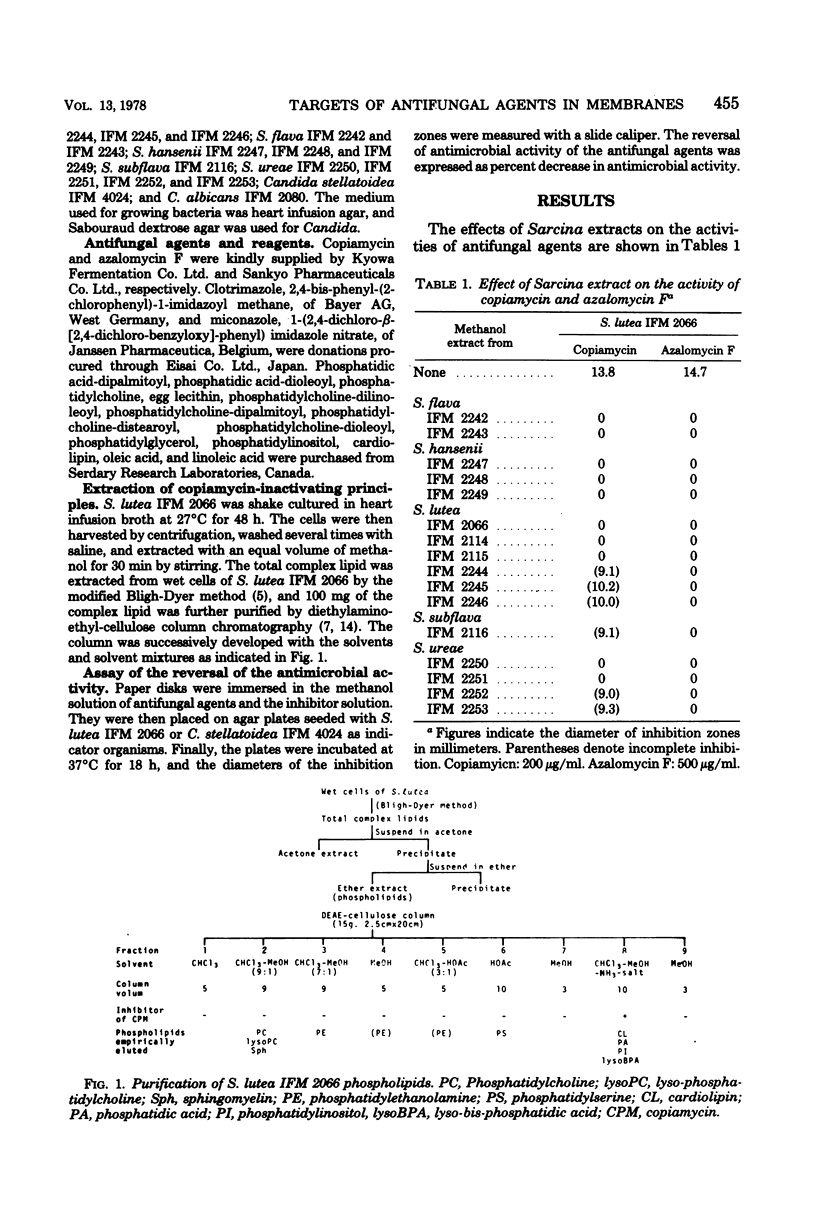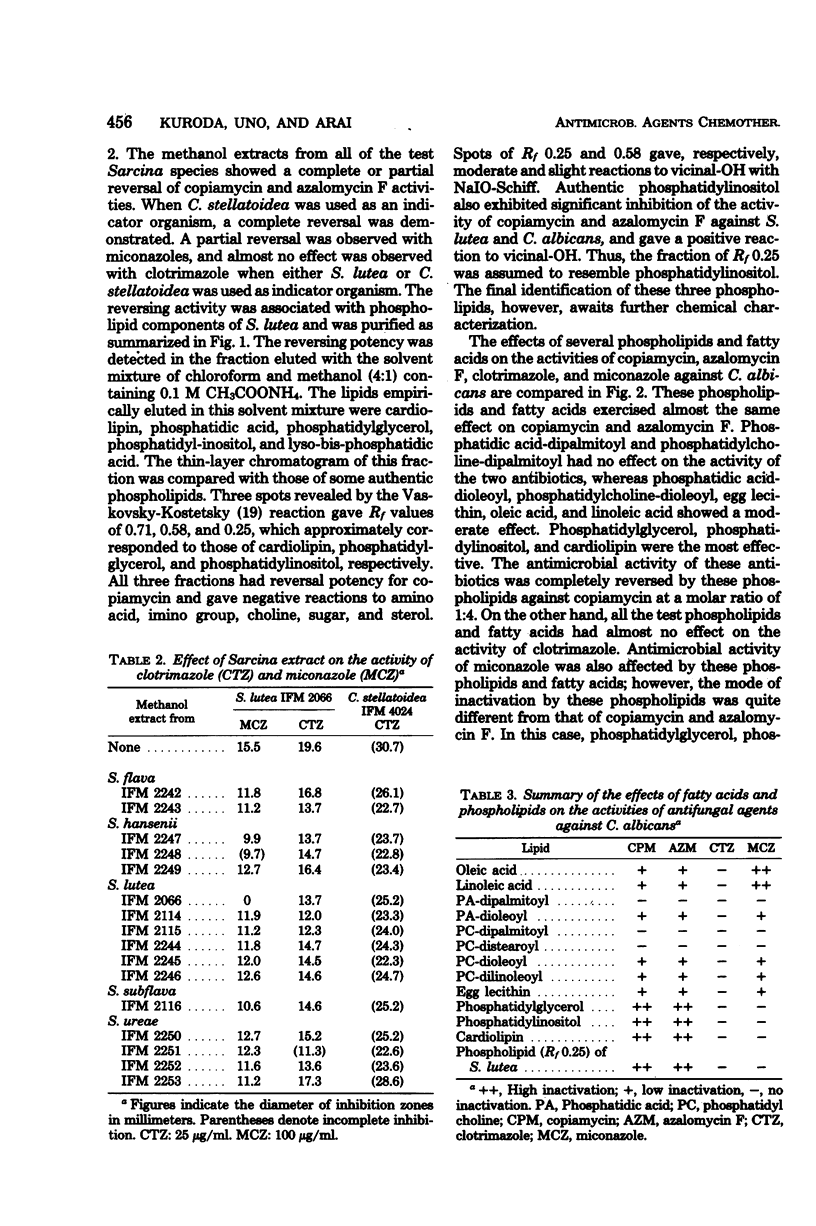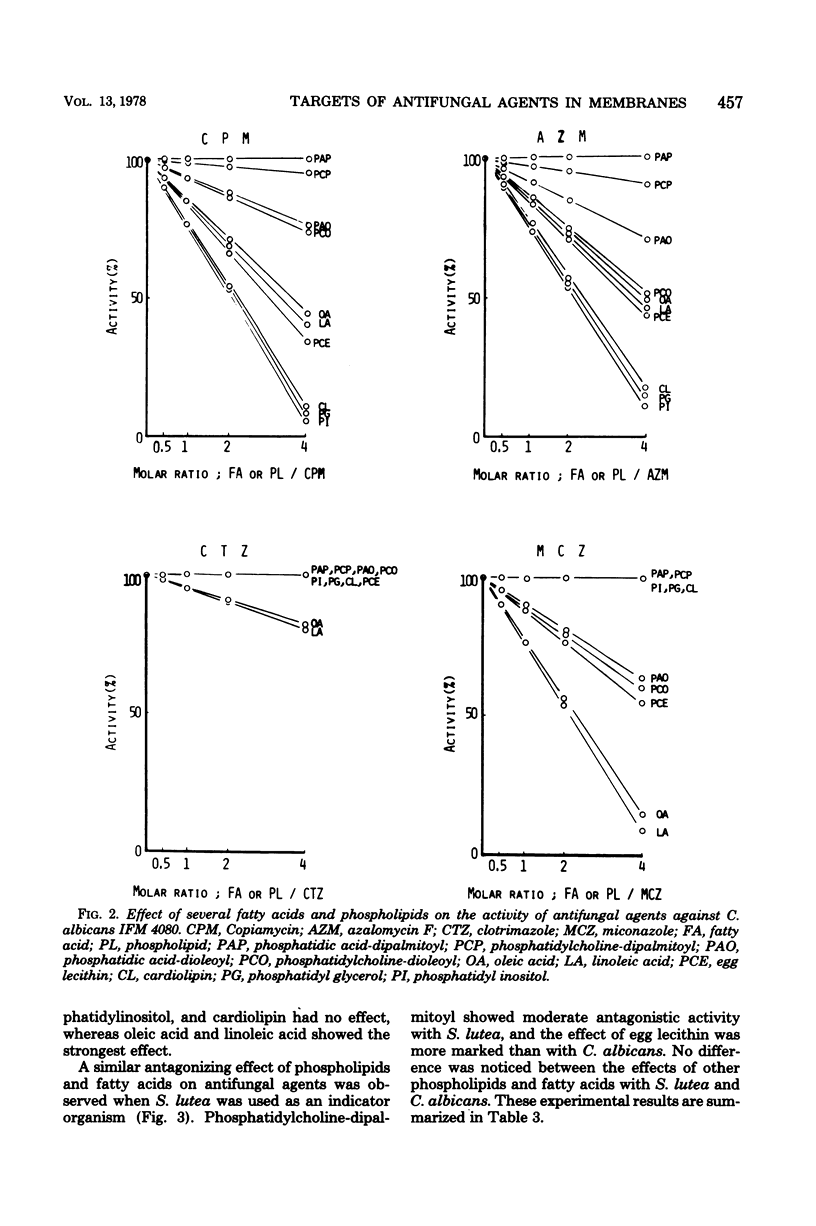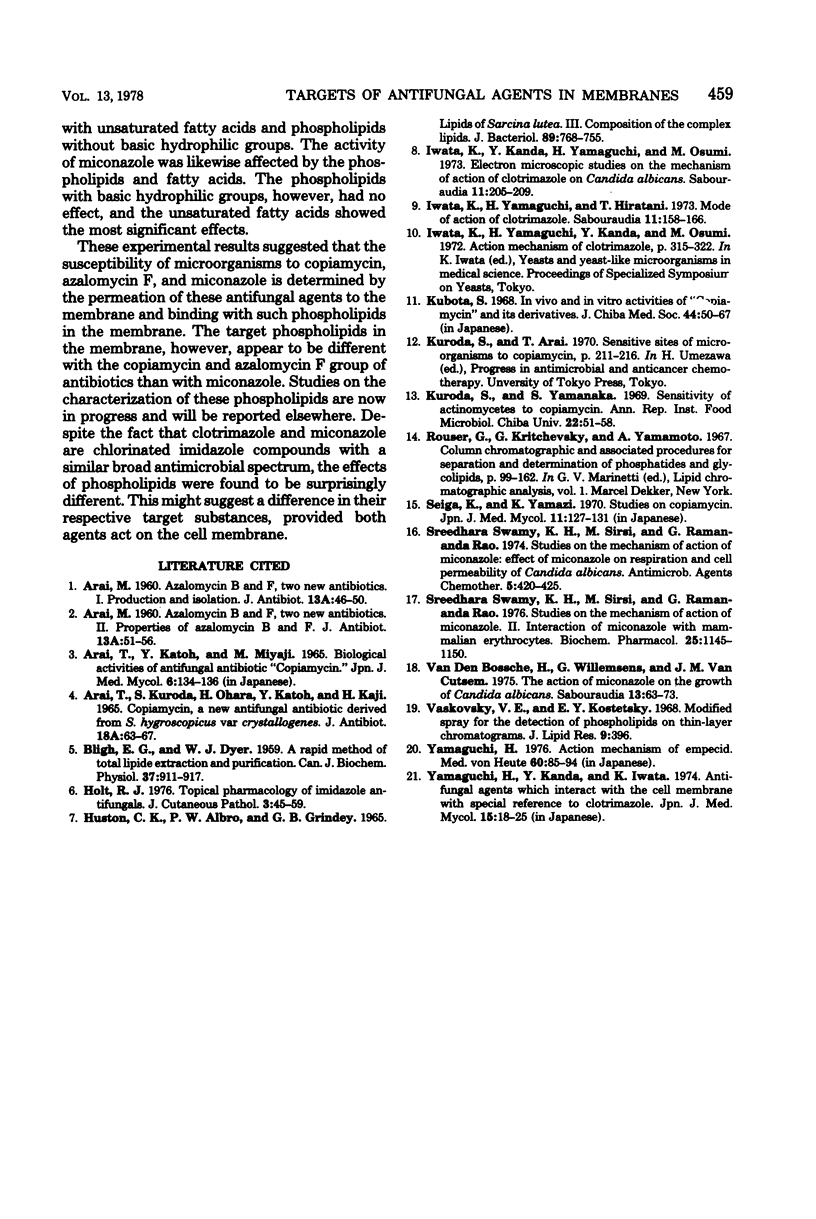Abstract
Copiamycin, an antifungal antibiotic, exhibits antimicrobial activity against a few bacteria in addition to a wide variety of fungi. The methanol extract of Sarcina lutea, one of the most susceptible bacteria, was found to reverse the antimicrobial activity of copiamycin. The reversing activity was associated with the phospholipid fraction of the bacteria. The S. lutea phospholipids also reversed the activities of azalomycin F and miconazole, but not that of clotrimazole. The effects of authentic phospholipids and fatty acids were also investigated. As the antimicrobial activities of copiamycin and azalomycin F were most strongly reversed in the same manner by phospholipids with unsaturated fatty acids and basic hydrophilic groups, the sites on the cell membrane sensitive to both antibiotics are assumed to be identical. On the other hand, the activity of miconazole was affected by different phospholipids from those which affected these two antifungal antibiotics, and the activity of clotrimazole was not affected by any of the phospholipids and fatty acids. It was postulated that the sites on the cell membrane sensitive to miconazole and clotrimazole are different from those sensitive to copiamycin and azalomycin F.
Full text
PDF





Selected References
These references are in PubMed. This may not be the complete list of references from this article.
- ARAI M. Azalomycins B and F, two new antibiotics. I. Production and isolation. J Antibiot (Tokyo) 1960 Jan;13:46–50. [PubMed] [Google Scholar]
- ARAI M. Azalomycins B and F, two new antibiotics. II. Properties of azalomycins B and F. J Antibiot (Tokyo) 1960 Jan;13:51–56. [PubMed] [Google Scholar]
- ARAI T., KURODA S., OHARA H., KATOH Y., KAJI H. COPIAMYCIN, A NEW ANTIFUNGAL ANTIBIOTIC DERIVED FROM S. HYGROSCOPICUS VAR. CHRYSTALLOGENES. J Antibiot (Tokyo) 1965 Mar;18:63–67. [PubMed] [Google Scholar]
- BLIGH E. G., DYER W. J. A rapid method of total lipid extraction and purification. Can J Biochem Physiol. 1959 Aug;37(8):911–917. doi: 10.1139/o59-099. [DOI] [PubMed] [Google Scholar]
- HUSTON C. K., ALBRO P. W., GRINDEY G. B. LIPIDS OF SARCINA LUTEA. 3. COMPOSITION OF THE COMPLEX LIPIDS. J Bacteriol. 1965 Mar;89:768–775. doi: 10.1128/jb.89.3.768-775.1965. [DOI] [PMC free article] [PubMed] [Google Scholar]
- Holt R. J. Topical pharmacology of imidazole antifungals. J Cutan Pathol. 1976;3(1):45–59. doi: 10.1111/j.1600-0560.1976.tb00846.x. [DOI] [PubMed] [Google Scholar]
- Iwata K., Kanda Y., Yamaguchi H., Osumi M. Electron microscopic studies on the mechanism of action of clotrimazole on Candida albicans. Sabouraudia. 1973 Nov;11(3):205–209. doi: 10.1080/00362177385190441. [DOI] [PubMed] [Google Scholar]
- Iwata K., Yamaguchi H., Hiratani T. Mode of action of clotrimazole. Sabouraudia. 1973 Jul;11(2):158–166. doi: 10.1080/00362177385190321. [DOI] [PubMed] [Google Scholar]
- Sreedhara Swamy K. H., Sirsi M., Ramananda Rao G. R. Studies on the mechanism of action of miconazole: effect of miconazole on respiration and cell permeability of Candida albicans. Antimicrob Agents Chemother. 1974 Apr;5(4):420–425. doi: 10.1128/aac.5.4.420. [DOI] [PMC free article] [PubMed] [Google Scholar]
- Swamy K. H., Sirsi M., Rao G. R. Studies on the mechanism of action of miconazole- II. Interaction of miconazole with mammalian erythrocytes. Biochem Pharmacol. 1976 May 15;25(10):1145–1150. doi: 10.1016/0006-2952(76)90361-0. [DOI] [PubMed] [Google Scholar]
- Van Den Bossche H., Willemsens G., Van Cutsem J. M. The action of miconazole of the growth of Candida albicans. Sabouraudia. 1975 Mar;13(Pt 1):63–73. [PubMed] [Google Scholar]
- Vaskovsky V. E., Kostetsky E. Y. Modified spray for the detection of phospholipids on thin-layer chromatograms. J Lipid Res. 1968 May;9(3):396–396. [PubMed] [Google Scholar]


